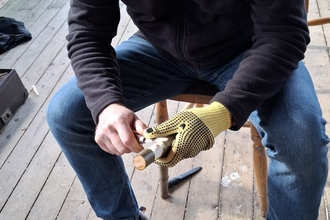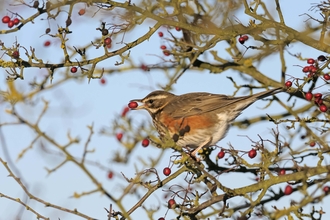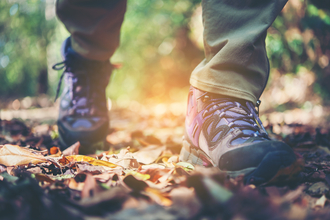I am definitely not a winter person, loving light, spotting spring flowers, listening to blackbirds . . . and when the clocks change and the heating goes on, I find it tough. To combat winter blues, here's a list of favourite 'wildlifey', wintery things.
The Positives of Winter
Sunset by Rebecca Neal
Winter bird song
Bird song is really soothing; I've spent many years learning how to distinguish birds by their song and love to identify what is singing. Birds sing to hold a territory, and most will not do that over the winter, but there are a few birds that still sing, and because the background birdy noise is less, they stand out more
Robins are the most tuneful bird in the neighbourhood in winter and a welcome sound. Males and females will hold individual territories over the winter and both will sing to defend them.
Wrens sing through the year and are notoriously loud! I recently discovered that if a male bird has a good roosting spot in his territory, he will call to invite other birds to share it, so they can huddle for warmth. He is less friendly to male birds when it gets nearer to breeding season!
Song thrushes establish breeding territories in late winter, so can be heard singing in January. They have a beautiful song and sing from high places so it travels far.
You can hear great spotted woodpeckers drumming in late winter as males establish their territory. Ok, so not exactly singing, but still quite cool to hear.
Owls
Being lucky to live in an area with lots of owls, I often see barn owls near home, and wintertime is the best time to spot short-eared owls. Shorted eared owls are daytime hunters, and our resident population are joined by winter migrants from Scandinavia, Russia and Iceland. The Great Fen is a good place to see them. Tawny owls establish their territories in late autumn and make most noise during this time. You can find them in woodland and even in urban areas where there are big trees. There is one that calls from a tree in the churchyard in my village.
Frost
Despite winter not being a favourite season, a frosty morning can look beautiful - especially a hoar frost.
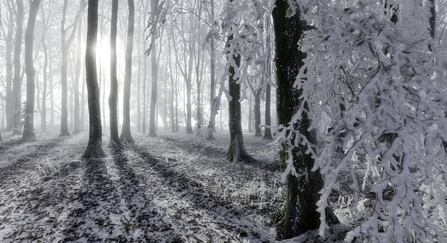
Beech woodland with hoar frost by Guy Edwards/2020VISION
Trees
The shape of trees and texture of their bark - over the winter these are more obvious: branches of a bare tree against a sunset are especially wonderful.
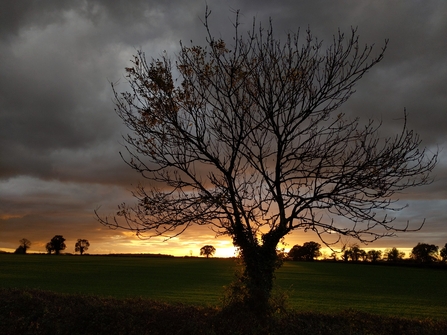
Tree at sunset by Rebecca Neal
Starling murmurations
A starling murmuration is one of the most amazing UK wildlife spectacles - the mesmerising motion, the noise of the wings and the chattering of the birds as they settle. It’s even more exciting to watch birds of prey swoop through the flock. Summer Leys Nature Reserve is a good place to see one.
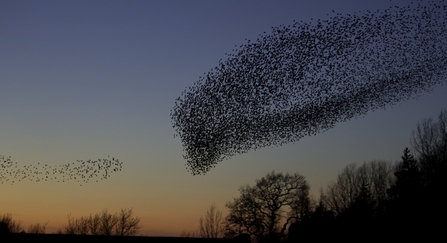
Starling murmuration by Danny Green/2020VISION
Winter migrants
My favourite winter migrants are fieldfares, redwings and waxwings. Waxwings are a special treat, what a beautiful bird they are. You can see fieldfares and redwings in flocks wherever there are hedges and trees with berries. They will do well this year with the amount of berries around. Waxwings come to the UK sporadically when there is not enough food for them in Scandinavia. They arrive first in the north, and gradually move south as they use up their food supply. They especially like red and orange berries (particularly rowen) and can sometimes be found hanging out in supermarket carparks eating the berries from ornamental trees - waxwings can get drunk by eating fermented berries!
Traveller's joy
Traveller’s joy is a beautiful climbing plant found in hedgerows. It has lovely flowers in the summer, and in the wintertime it has feathery-looking seeds. The seeds are creamy white and glow beautifully in sun: Old Sulehay in Northamptonshire is a good place to see it.
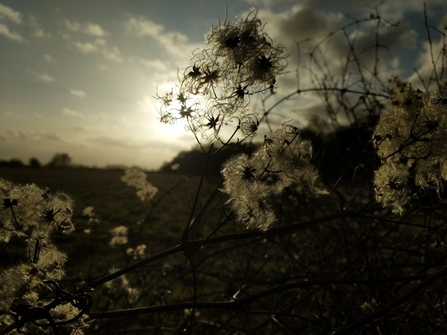
Traveler's joy by Rebecca Neal
Common reed
Reed is a beautiful plant with its purpley flowers in the summer and in the winter, the seed heads make a good silhouette against the sky and glow brilliantly in the sun.
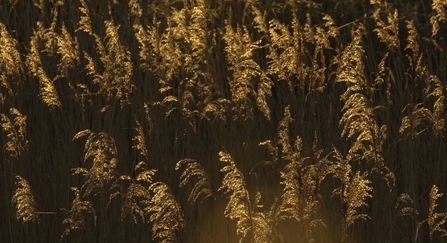
Reed bed by Chris Gomershall/2020VISION
Catkins
Catkins can be found throughout the winter and are a little reminder that our trees are just snoozing. I particularly love hazel catkins, which start to appear in autumn and open to release pollen into the wind in January. Catkins contain the male flowers. The female flowers of hazel are hard to spot, you only see a tangle of small red styles, with the flower mostly remaining within a green bud. There are lots of hazel trees on Cambourne Nature Reserve.
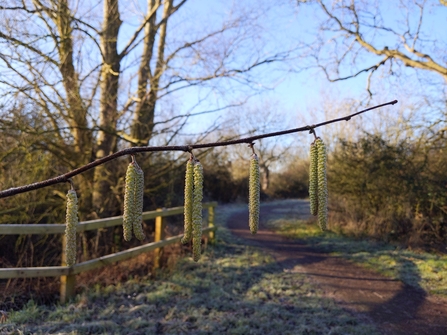
Hazel catkin by Rebecca Neal












